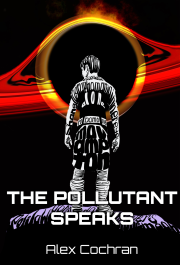Guest Blog Post: Distributor vs. Wholesaler–Getting Your Book on the Shelf
To kick things off for 2010, we have a great guest blog post from multi-published author Cathy Clamp.
The distinction between a wholesaler and a distributor is an important one, especially for writers who want to get their books onto physical bookstore shelves. Too often, however, writers and startup publishers aren’t aware of the difference, and don’t realize that a wholesaler like Ingram is only half the distribution picture. Below, Cathy describes what distributors and wholesalers do, and the implications of each for writers (and publishers).
————————————-
On nearly every thread in all the rooms of nearly every writer site I visit, the issue of the difference between Distributors and Wholesalers comes up. It seems to me like it’s time to discuss the distinction when it comes to getting your books on the shelf.
And I mean all books, because ultimately, it doesn’t matter whether your book is self-published, or with a major New York publisher, a small indie press, or even PublishAmerica. It’s all the same at this level of the game.
Let’s start with major NY publishers. They have a sales force. The sales department is charged with doing nothing but selling books for the publisher. Sales reps meet regularly with the buyers for the major chains and secondary markets. You might have one salesperson who handles Borders and B&N, another who meets with Target and WalMart, a third who handles Booksamillion and Costco, etc. They take the books of the publisher directly to the buyers who handle them.
Every book needs a salesperson to get it into the store. Yes, book buyers are looking for new books–but there is only so much space in each bookstore. So they have to be selective.
But even if every book needs, and deserves, a salesperson–let’s face it, a small press or self-publisher often can’t afford to have a full time salesperson, much less a sales “force,” to go out to meet with every book buyer for every chain. Too, it’s unlikely (if not impossible) that the buyer would be willing to meet with every single small press out there. There are just too many of them.
So, a lot of small publishers hire “Distributors.” A distributor takes the place of a sales force by doing the exact same thing a dedicated, salaried salesperson would do. And for the same reason. They’re salaried.
Distributors cost money. A lot of money. Plan on about a third of your retail price to pay the distributor. It’s a monthly/quarterly contract for the privilege of putting your books in front of the market, selling them to the buyers at the stores and increasing orders for the books. Is it worth the money? Hard to say. If you’re an indie press with thirty niche books that might struggle to interest a bookstore without a marketing pitch, then sure. Absolutely. But for a single, stand-alone novel? Doubtful. In fact, it’s doubtful a distributor would have a self-pubbed author or small press. It has to be worth the distributor’s while, too. Generally speaking, if a press has fewer than ten titles, a distributor won’t accept it as a client.
Now, if a publisher (again, whether small press or self-pub) chooses not to spend the money for a distributor, they go with the wholesalers. To make the difference simple, look at it like this:
– A distributor is the equivalent of a pack-n-ship store.
– A wholesaler is the equivalent of your local postal office.
What’s the difference?
Well, if you walk in the door of a pack-n-ship store with a glass lamp to send somewhere, you hand them the lamp and they bubble wrap it, put it in a box, fill the box with those styrofoam peanuts or the equivalent, tape it up, calculate the shipping cost, print out the label, put the label on the box and place it with the other boxes for delivery. They will also accept the box back if anything goes wrong in shipping, and many of them will arrange to file your claim if the box is damaged.
The postal office? Will they wrap it? No. Put it in the box? No. Fill the box? No. Print out the label? No. Tape it? Maybe, depending on the office. Calculate the shipping cost? Sure. Put it with the other boxes? Sure.
In other words–a distributor is a “full-service” shipping company. You can pay them to sell the book, take the orders, fill the orders, handle the returns, manage any disputes with the bookstores, etc. They’re proactive–taking on the role of the salesperson as though they were a paid employee.
A wholesaler is the post office. They’ll keep the book on their list and send it out if it’s ordered. They’re reactive–taking on no role other than as a pass-through.
Now, one of the tricky things in this industry is that one of the major players, Ingram, is both a distributor and wholesaler. They have separate arms to handle each. But, per the descriptions above, there’s a vast difference on what they do if you pay them to be your distributor, versus merely having a listing with them in their wholesale catalog.
Unfortunately, a lot of small presses and POD self-publishing companies try to make you believe they have the distributor relationship when, in fact, they have the wholesale relationship. Since Ingram won’t reveal its client list, it’s hard to know which is which. However, I believe that right now, Ingram requires that a publisher that’s a distribution client must have about $20K+ of income from Ingram in order to qualify. If you think logically, would even PublishAmerica, the powerhouse of POD presses, qualify? Probably not. PA has the titles, but not the sales. PA, and hundreds of other POD-based presses with far fewer titles than PA, would never be accepted as a distribution client. Simply wouldn’t happen. They are with the wholesale arm–i.e., they’re listed in the Ingram catalog.
But what does that actually mean? Have you ever seen a Columbia House catalog in the mail? It’s pages and pages long with titles of movies, and they rotate the titles by season or when a major star has a new movie out. Now, imagine the Columbia House list if they only listed the titles of the movies–with no description of the movie. You might have heard of some, but what about the others? How would you know which to order? Word of mouth? Sure. That always works. Or someone in your family specifically requesting it by name.
That’s what the Ingram catalog is. Hundreds and hundreds of pages of titles with ISBN/ISBN-13, author and that’s about it. Is it impossible for your book to get onto a shelf that way? No. It’s not like winning the mega-lottery–it’s closer to winning a small prize in the Pick-Three lottery game, or a prize on a scratch ticket. It happens. But it’s not the same as if you had someone going from door to door, talking your book up and pressuring stores to stock and sell it.
Here’s a couple of good links to help you understand the process. Read them. Learn them. If you plan to go with a small press or a POD self-publishing company, you’ll need to know both the terminology and your path forward.
Understanding the Book Distribution Channels, by Jacqueline C. Simonds
An Analysis and Comparison of Book Distribution Agreements, by Ivan Hoffman
Should You Deal With a Book Distributor or Wholesaler? by Hal Licino
——————————–
Cathy Clamp is half of the USA Today bestselling author team of C.T. Adams and Cathy Clamp. They are winners of the 2008 Career Achievement Award in paranormal romance by RT BOOKreviews Magazine and are moving to the urban fantasy shelves as Cat Adams in June with Blood Song, the first in The Blood Singer series. Cathy has long supported SFWA’s goals of protecting aspiring and published writers, and is a member of the Grievance Committee’s Special Hasbro Task Force.
Cathy’s/C.T.’s current releases and sample chapters of all of their books and anthologies are available at www.catadams.net



